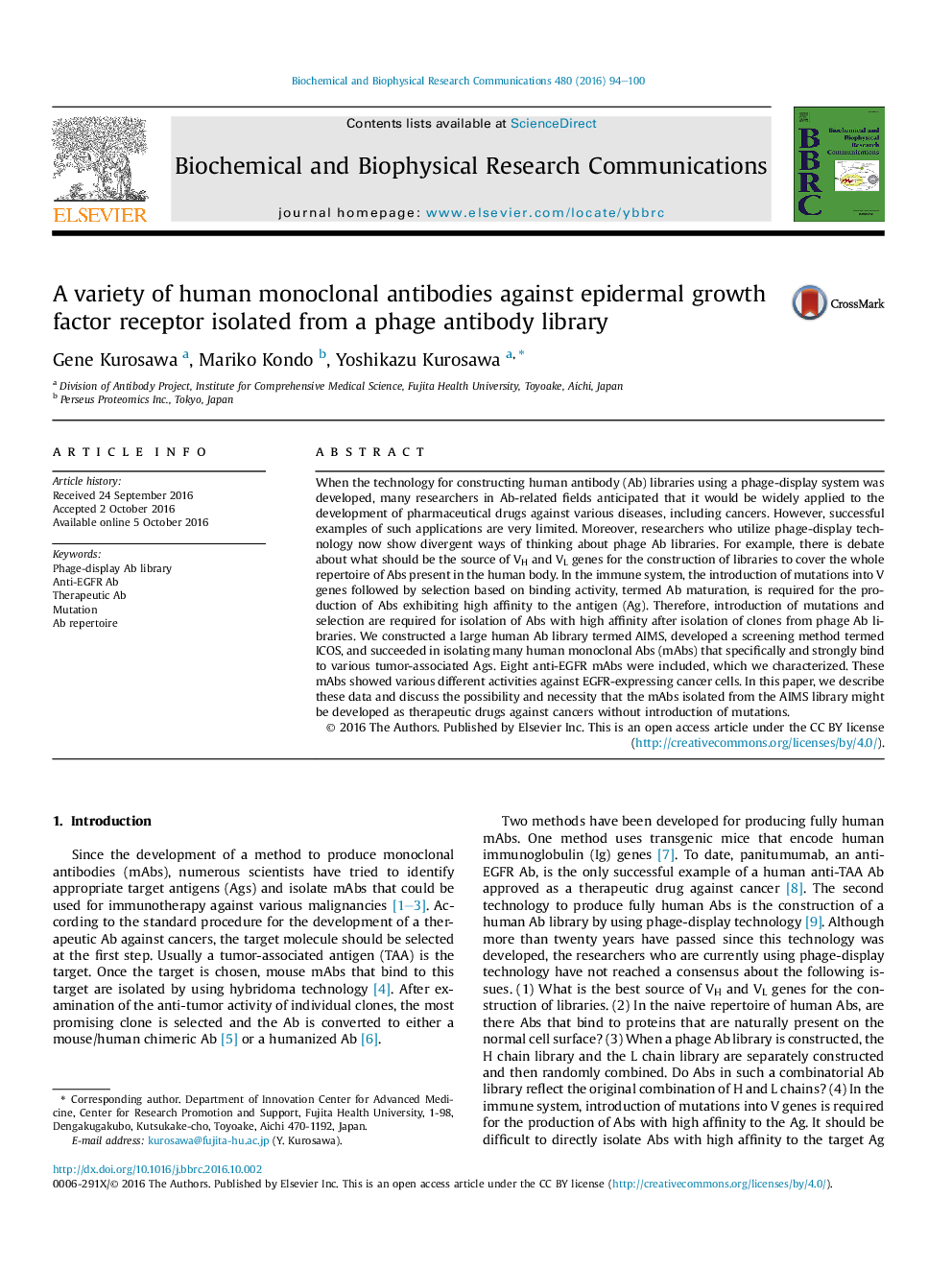| Article ID | Journal | Published Year | Pages | File Type |
|---|---|---|---|---|
| 5506868 | Biochemical and Biophysical Research Communications | 2016 | 7 Pages |
â¢In order to develop therapeutic Abs against various malignancies, Abs that show strong binding to the Ag and induce various activities in the target cells are required in the initial stage.â¢In the present study we presented data regarding the characteristics of eight kinds of anti-EGFR mAb that were isolated from the human Ab library we constructed.â¢We also discussed the possibility that such Abs might be developed as drugs against cancers, and the necessity for these mAbs to be developed without introduction of mutations.
When the technology for constructing human antibody (Ab) libraries using a phage-display system was developed, many researchers in Ab-related fields anticipated that it would be widely applied to the development of pharmaceutical drugs against various diseases, including cancers. However, successful examples of such applications are very limited. Moreover, researchers who utilize phage-display technology now show divergent ways of thinking about phage Ab libraries. For example, there is debate about what should be the source of VH and VL genes for the construction of libraries to cover the whole repertoire of Abs present in the human body. In the immune system, the introduction of mutations into V genes followed by selection based on binding activity, termed Ab maturation, is required for the production of Abs exhibiting high affinity to the antigen (Ag). Therefore, introduction of mutations and selection are required for isolation of Abs with high affinity after isolation of clones from phage Ab libraries. We constructed a large human Ab library termed AIMS, developed a screening method termed ICOS, and succeeded in isolating many human monoclonal Abs (mAbs) that specifically and strongly bind to various tumor-associated Ags. Eight anti-EGFR mAbs were included, which we characterized. These mAbs showed various different activities against EGFR-expressing cancer cells. In this paper, we describe these data and discuss the possibility and necessity that the mAbs isolated from the AIMS library might be developed as therapeutic drugs against cancers without introduction of mutations.
